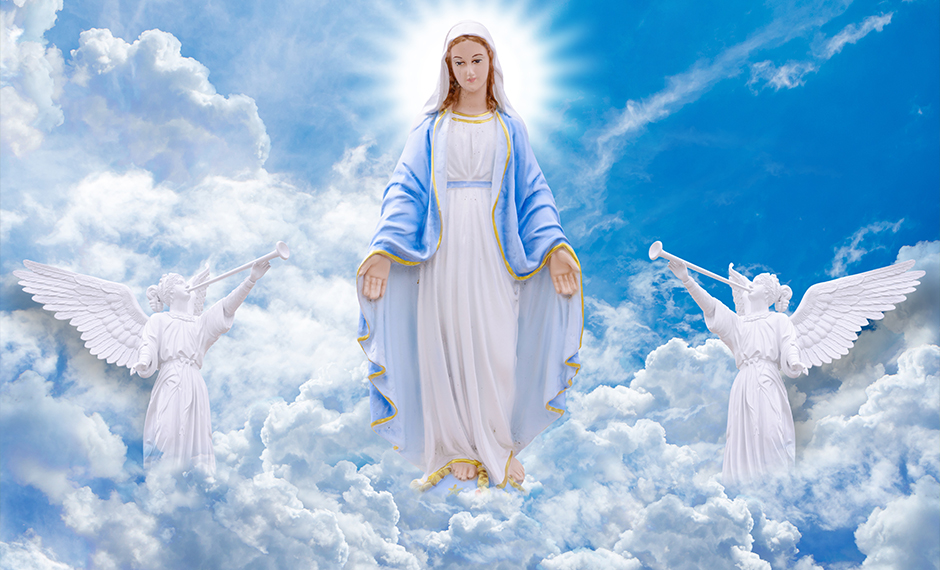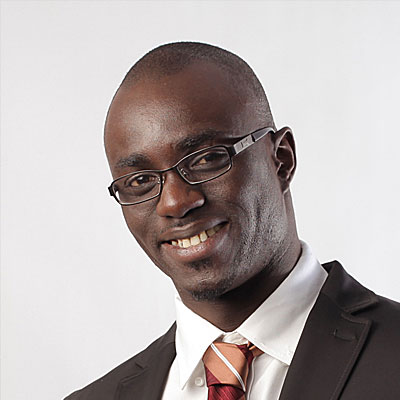Solemnity Of The Assumption Of The Blessed Virgin Mary
 September 30, 2019
September 30, 2019
The Fathers of the Church, the great Doctors, in the sermons they preached on the feast of the Assumption of the Mother of God, had as their theme a doctrine which all the Christian world already knew and accepted; it was for them to elaborate it, to bring out the essential meaning of it, beyond what lay on the surface. To say that the body of the Blessed Virgin never knew decay was not to exhaust the meaning of this solemnity. What we celebrated was the triumph she won over death when she was glorified, after the pattern of her only Son Jesus Christ in heaven” (The Office of Readings on the Assumption, the Second Reading).
The Assumption of the Blessed Virgin Mary into Heaven was the bodily taking up of the Virgin Mary into Heaven at the end of her earthly life. On November 1, 1950, in his Apostolic Constitution, Munificentissimus Deus, Pope Pius XII defined the Assumption of Mary to be a dogma of faith: “We pronounce, declare and define it to be a divinely revealed dogma that the immaculate Mother of God, the ever Virgin Mary, having completed the course of her earthly life, was assumed body and soul to heavenly glory” (Source: Internet). The Assumption is the oldest of all Marian Feasts. By the Thirteenth Century this dogma had been universally accepted.
Scripture does not give a comprehensive account of Mary’s Assumption into heaven. Nevertheless, Revelation 12 speaks of a woman who is caught up in battle between good and evil. This woman clearly refers to Mary. Again, in 1 Corinthians 15:20, St. Paul speaks of Christ’s resurrection as the first fruits of those who have fallen asleep. Since Mary is closely associated with all the mysteries of Jesus’ life, no one should be surprised that the Holy Spirit has led the Church to belief in Mary’s share in his glorification. Mary was so close to Jesus on earth that she must be with him body and soul in heaven. The Blessed Virgin Mary is being referred to in Psalm 45:10-12. Here, the Psalmist says, “Bride of the king, listen to what I say…your beauty will make the king desire you; he is your master, so you must obey him”.
“In the light of today’s feast of Mary, it is easy to pray her Magnificat (Lk. 1:46-55) with new meaning. In her glory she proclaims the greatness of the Lord and finds joy in God her Saviour. God has done marvels to her and she leads others to recognize God’s holiness. She is the lowly handmaid who deeply reverenced her God and has been raised to the heights. From her position of strength, she will help the lowly and the poor find justice on earth, and she will challenge the rich and powerful to distrust wealth and power as a source of happiness” (Source: Internet). In the words of Scott P. Richert, “The Assumption of the Blessed Virgin Mary is a foretaste of our own resurrection”. The author continues, “Celebrated every year on August 15, the Feast of the Assumption commemorates the death of Mary and her bodily assumption into heaven before her body could decay…a foretaste of our own bodily resurrection at the end of time…. Because it signifies the Blessed Virgin’s passing into eternal life, it is the most important of all Marian Feasts…” (Source: From the Internet, EWTN).
It should not be surprising to know that Mary actually died, but what is emphasized here is that her body did not know decay. It is also worthy of note that, Pius XII, in the text explaining his definition of the dogma of the Assumption, refers repeatedly to the Blessed Virgin’s death before her Assumption, and the consistent tradition in both the East and the West holds that Mary did die before she was assumed into heaven. In fact, Eastern Orthodoxy used the Latin word dormitio which is translated as “fallen asleep” to designate Mary’s death. However, since the definition of the Assumption is silent on this question, Catholics, particularly in the West, can legitimately believe that Mary did not die before the Assumption.
In the Eighth Century, St. John Damascene was known for giving sermons at the holy places in Jerusalem. At the tomb of Mary, he expressed the belief of the Church on the meaning of the feast. He said: “Although the body was duly buried, it did not remain in the state of death, neither was it dissolved by decay….You were transferred to your heavenly home, O Lady, Queen and Mother of God in truth” (Source: Internet). “St. John Damascene, the interpreter of this tradition par excellence, makes an eloquent comparison between the high privileges conferred on the Mother of God in general, and her bodily Assumption. ‘It was fitting that she who in giving birth had preserved her virginity unspotted should keep her body incorrupt even after death. It was fitting that she who had borne the Creator as a child in her bosom should have a dwelling-place with God. It was fitting that the bride espoused by the Father should dwell in the bridal-chambers of heaven. It was fitting that she who had gazed on her Son on the cross, receiving then in her breast the sword of sorrow she had been spared at his birth, should behold him seated with the Father. It was fitting that the Mother of God should enjoy the privileges of the Son and should be honoured by all creation as the Mother and the handmaid of God.’
“Saint Germanus of Constantinople sees the translation of our Lady’s incorrupt body as fitting in, not only with her divine motherhood, but with a special sanctity which attaches to its virgin state: ‘You appear in beauty, as it is written (see Ps. 45:10), and your virginal body is altogether holy, altogether chaste, altogether God’s dwelling; so that it can never know dissolution into dust; transformed indeed, because human, to the glory of incorruptible life; yet, the same body, living and glorious, preserved from harm, sharing in perfect life.’
“Another very ancient writer states: ‘Being the most glorious Mother of Christ the Saviour, our God, who bestows life and immortality, she is restored to life by him, and in her body shares for evermore bodily incorruptibility with him who raised her from the grave and assumed her to himself in a manner known only to himself’” ( The Office of Readings on the Assumption, The Second Reading). The Assumption completes God’s work in her since it was not fitting that the flesh that had given life to God himself should ever undergo corruption.
In the Dogmatic Constitution of the Church, no. 68, the Fathers of the Second Vatican Council say: “In the bodily and spiritual glory which she possesses in heaven, the Mother of Jesus continues in this present world as the image and flowering of the Church as she is to be perfected in the world to come. Likewise, Mary shines forth on earth, until the day of the Lord shall come (see 2 Peter 3:10), as a sign of certain hope and comfort for the pilgrim people of God”. “…all these Fathers base their conclusions on the Bible, which has given us the picture of our Lord’s Mother as inseparably attached to her divine Son, and constantly sharing his lot” (The Office of Readings…). The Assumption is God’s crowning of His work as Mary ends her earthly life and enters eternity. Consequently, the feast turns our eyes in that direction, where we will follow when our earthly life is over. Mary was “full of grace” (Lk. 1:28). Thus, “For the crown of all her graces, she was exempted from the sentence of decay; shared her Son’s victory over death, and was carried up to heaven, soul and body, there to reign as queen at his right hand, who is the King of Ages, the immortal” (The Office of Readings…).
Finally, it is worthy of note that the feast days of the Church are not just the commemoration of historical events; they do not look only to the past. They look to the present and to the future and give us an insight into our own relationship with God. The Assumption looks into eternity and gives us hope that we, too, will follow our Lady at the end of our life. At the end of our earthly life, may we eventually possess eternal life, through Christ our Lord. Amen.
BY Rev. Fr. Mark Ajiga, Friday,
 Guy Wilkins
Guy Wilkins Larry Reed
Larry Reed Roxanne Holland
Roxanne Holland Bridget Kennedy
Bridget Kennedy Sally Mendoza
Sally Mendoza